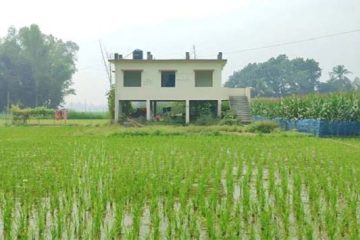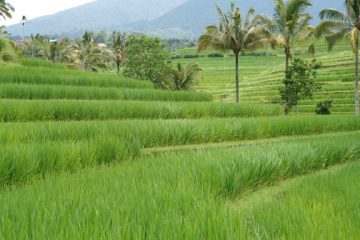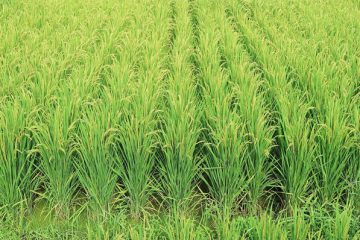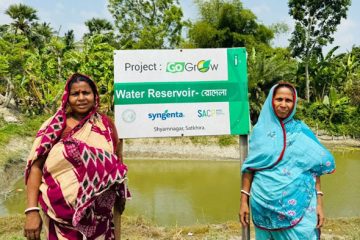Mamun Islam, BSS, Rangpur
Agri-scientists have completed necessary research, experiments and validation of new flood- tolerant varieties of Aman paddy to pave the way for producing 40 lakh tonnes of additional paddy every year by large-scale farming in Bangladesh alone.
Repeated success of the scientists and farmers in getting expected production of flood-tolerant paddy in Bangladesh and India have ushered in a new era in the disaster-prone agriculture sector of the country, sub-continent and other flood- prone countries.
The success was achieved through farming Swarna Sub-1 along with three new Sub-1 entries of BR1-1 Sub-1, IR-64 Sub-1 and Sambamasuri Sub-1 flood-tolerant varieties of paddy using participatory variety selection (PVS) mother trial methods.
In Bangladesh, they successfully cultivated the paddy in on- station BRRI Regional Station, Rangpur and on-farm farmers’ fields at Rangpur, Kurigram, Lalmonirhat, Gaibandha, Sirajganj and Nilphamari districts during the past three seasons.
Besides, the varieties were successfully cultivated in Indian states of Uttar Pradesh (UP), Bihar and Orissa, where the produced seeds are expected to be released by the concerned Indian state governments soon for large-scale farming.
Scientists of Bangladesh Rice Research Institute (BRRI), IRRI (Philippines), Central Rice Research Institute (CRRI) and Norendra Dev University of Agriculture Technology (NDUAT) of India and University of California (UC, Davis & Riverside) developed and validated the technology.
Bill & Melinda Gates Foundation (BMGF) of the USA provided necessary financial assistances through IRRI to disseminate the technology among the farmers under its Stress Tolerant Rice for Poor Farmers in Africa & South Asia (STRASA) programme.
The scientists are now hoping to overcome colossal losses being caused by flash floods to Aman paddy in about 12 lakh hectares potential area every year in Bangladesh alone by large- scale farming of the varieties. Besides, huge quantities of additional paddy could be produced annually by cultivating the flood-tolerant paddy in over 60 lakh hectares of potential flood- prone land area in UP, Bihar, Orissa and West Bengal in India, they added.
Farmers got desired results in farming the Sub1 entries using Developed Agronomical Management Method (DAMM) in Bangladesh last year and the country could achieve complete self- reliance in food by its large-scale farming. “Last season, we successfully cultivated these Sub 1 varieties, growing plants of which sustained strains of floodwaters for 12-16 consecutive days in northern Bangladesh, then grew well and yielded better production,” BRRI Scientific Officer Anarul Haque said.
The Indian farmers also harvested good yield of Swarna Sub 1 paddy in Orissa even after 35 days submergence in flood waters in 3-frequencies where all other traditional varieties including mega variety Swarna were totally perished last year. Talking to BSS today, the scientists suggested the concerned governments to approve and release the seeds for large-scale production to overcome the colossal damages being caused by flash floods to Aman paddy every year.
After conducting trials, preference analysis of Sub1 entries by the farmers, extensions providers, GOs and NGOs in the flood- prone areas, the BRRI scientists are expecting now approvals of the National Seed Board for production and marketing of the seeds.
Rangpur Regional Station of BRRI in collaboration with IRRI under the Submergence and Flood Prone Environment Agriculture Project of the Consortium for Unfavourable Rice Environment (CURE) successfully tested and validated the flood tolerant new variety paddy since 2005.
Chief Scientific Officer and Head of Agronomy, BRRI Gazipur and key-site coordinator of CURE working group-2 (BRRI-IRRI) Dr MA Mazid, who is also the team leader of the research group of BRRI scientists, termed the success as a revolutionary one.
Courtesy: thebangladeshtoday.com






